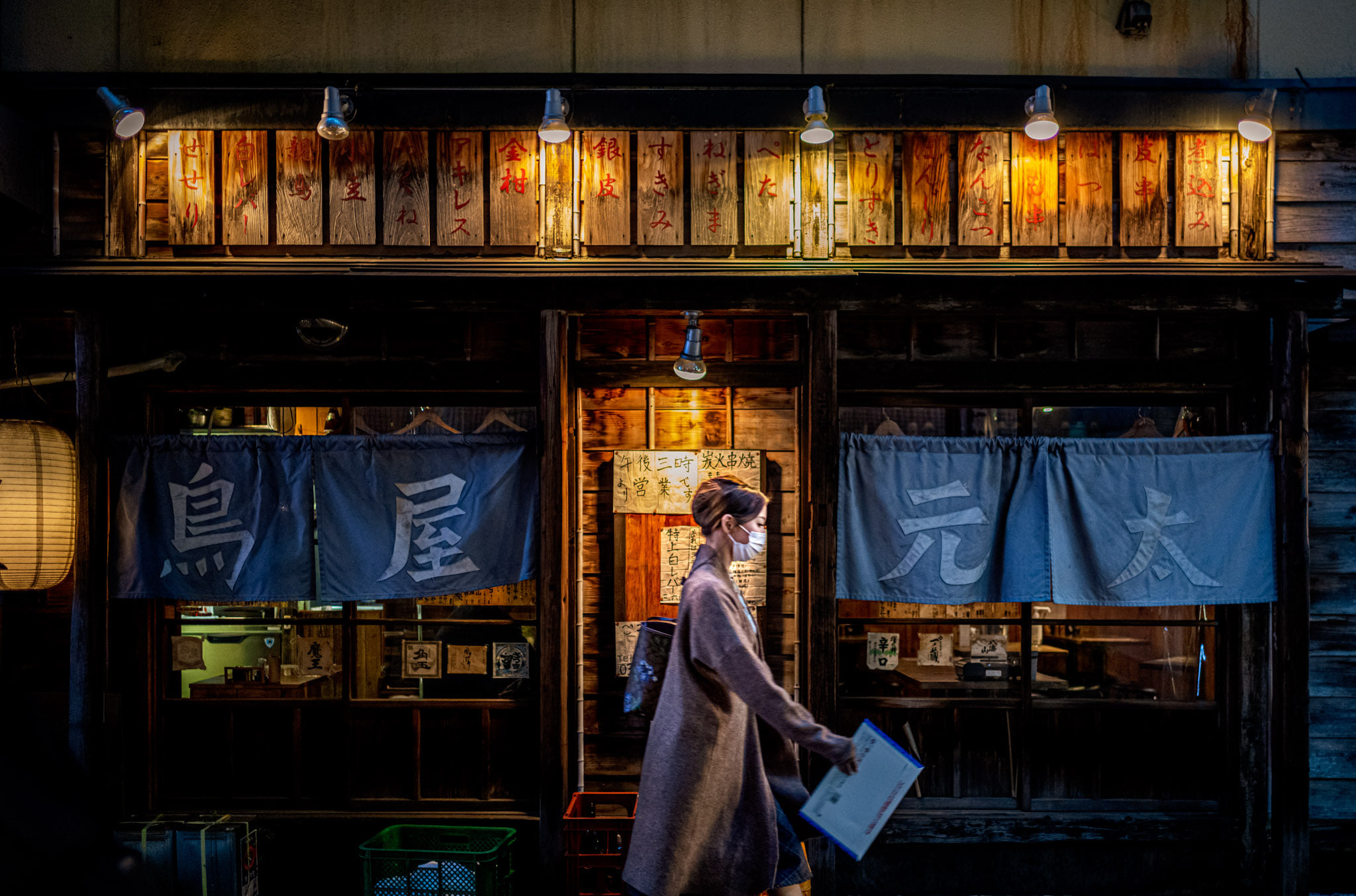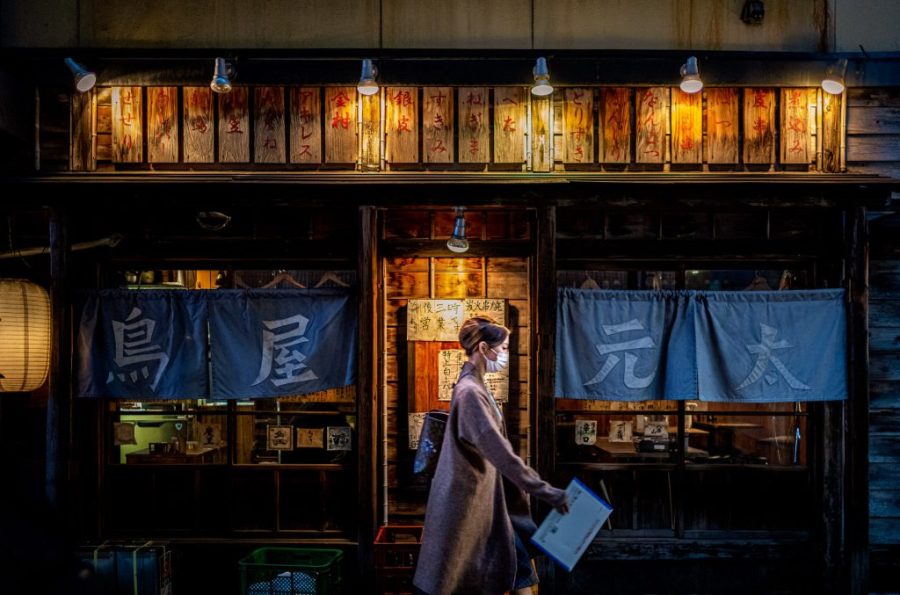Our communities have become ever more important during the lockdowns and travel restrictions imposed to mitigate the Covid-19 pandemic. While grounded, many people transformed these limitations into local adventures – an opportunity to rediscover the beauty of their local neighbourhood, finding joyful moments while strolling along a peaceful river or riding a bike down a favourite street.
That sense of connection and positivity is the inspiration behind “This is My Street”, a global photo project conducted in 2020 and 2021 by the Associação Internacional de Filantropia Macao (International Philanthropy Association). After setting up a Facebook community, the nonprofit invited people from all over the world to submit images of themselves enjoying life in their neighbourhood. In total, the collaborative series accumulated more than 7,000 images across 130 countries, which the association recently transformed into an inspiring photo book.
The association will present 50 select images during a charity exhibition at the Artyzen Grand Lapa Macau from 13 to 28 November. The photography book will be on sale at the exhibition and all proceeds will benefit Caritas Macau’s Lar de Nossa Senhora da Penha facility, a centre that houses children with disabilities.
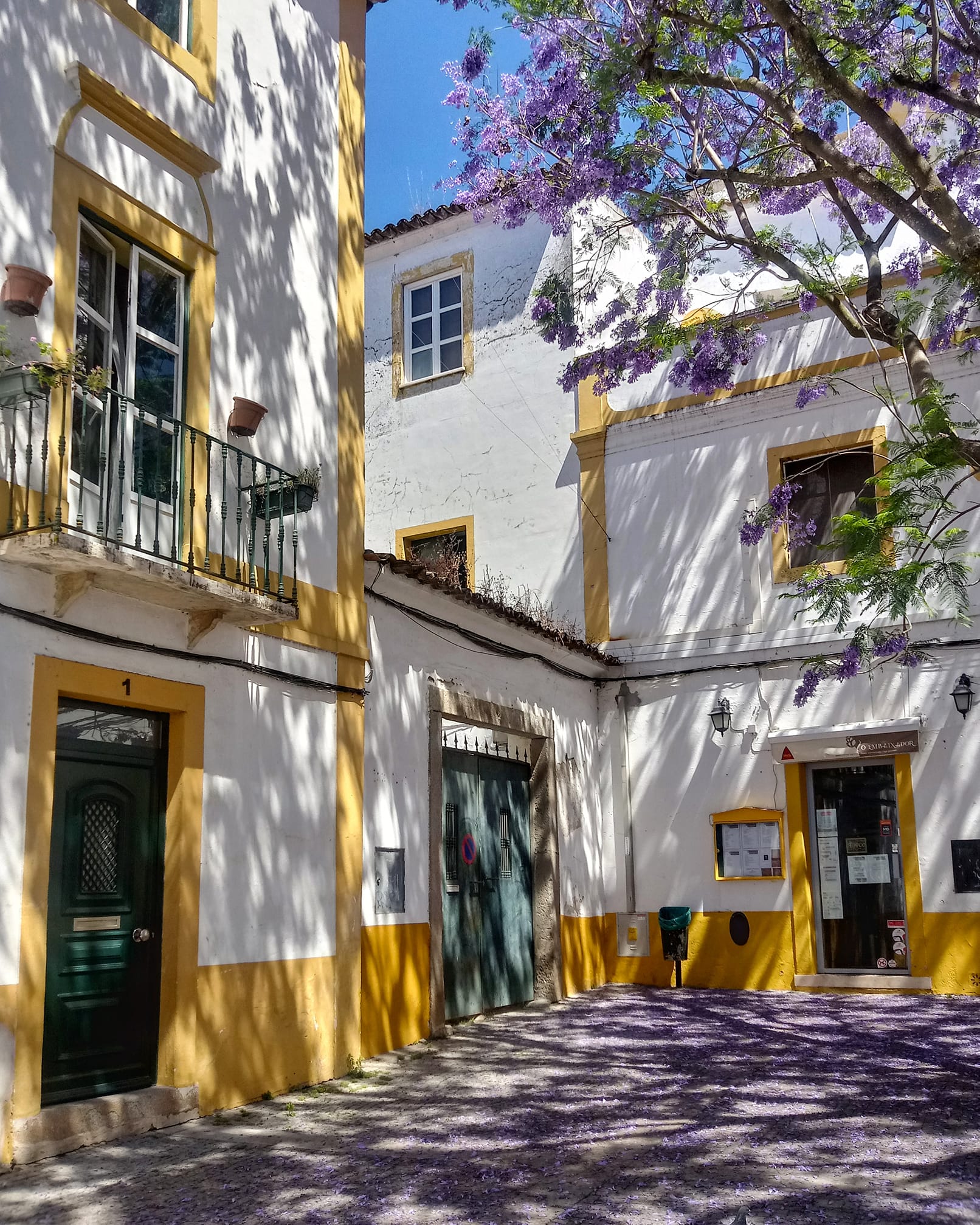
“We are proud to host this meaningful project amid the pandemic. For us all to rethink, reflect and seek ways to make a positive impact by contributing to our society. By connecting people in five continents across the world who learn to appreciate the beauty of their homes, cities and countries in this beautiful world,” says Rutger Verschuren, general manager of Artyzen Grand Lapa Macau.
“I love the photo taken by Cidália Cotrim Soares in Évora, Portugal [a UNESCO World Heritage Site], which shows that many, including myself, have taken the lockdown period as an opportunity to walk through streets and neighbourhoods where I otherwise would not have gone,” shared Verschuren.
We sat down with Lurdes de Sousa, founder and president of the International Philanthropy Association, to learn more about the international photography project, emerging trends in philanthropy, and the association’s plans to collaborate with international institutions.
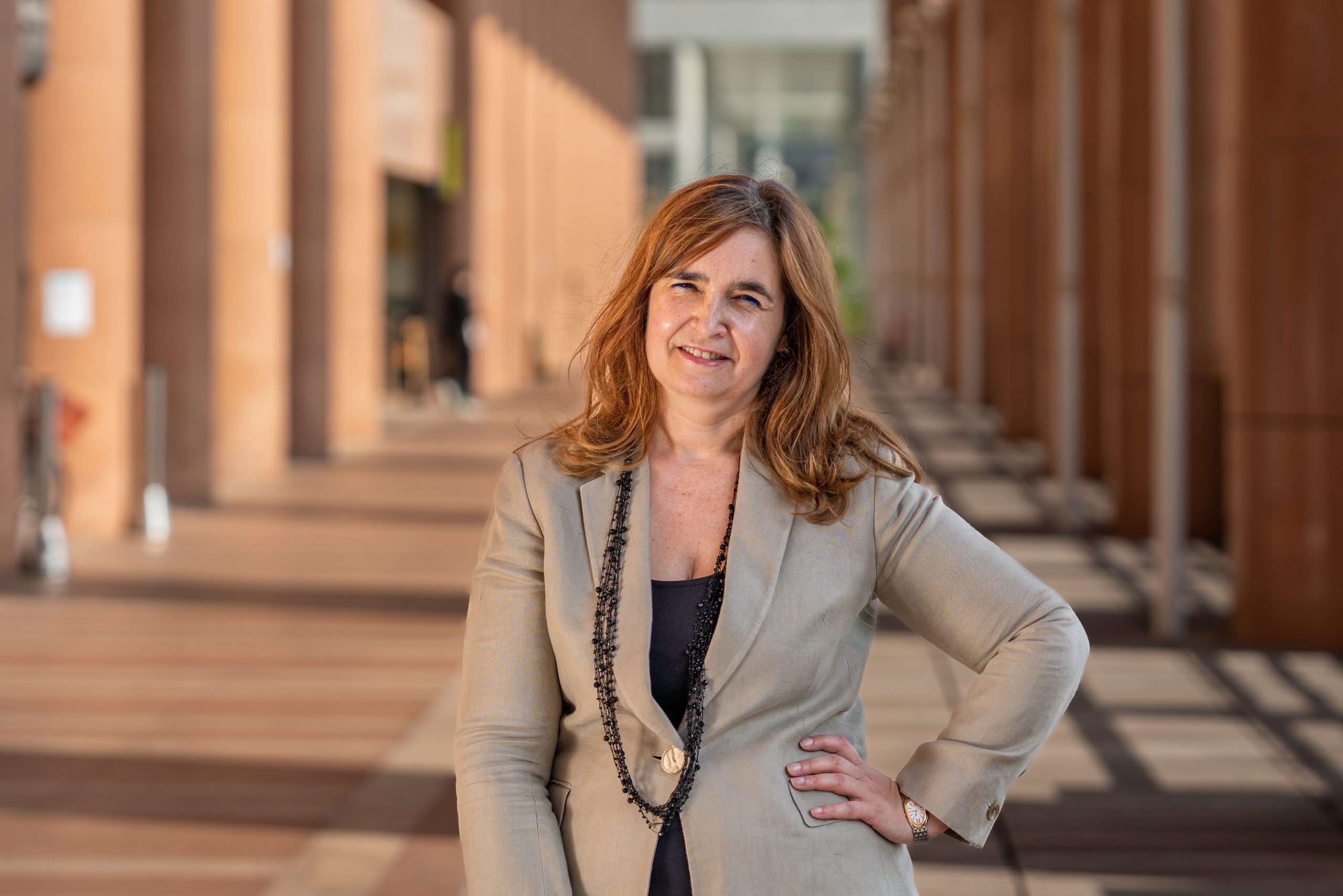
Macao News: How would you describe the project in a nutshell?
Lurdes de Sousa: When the Covid-19 crisis began, I created a Facebook group so that people could share photos and express what they saw or how they felt. The challenge was simple: just leave your house and share a picture of your street.
Since then, the group has welcomed almost 3,000 followers from various parts of the world. I started receiving photos from everywhere – I felt that people were going through a time when they longed for community and needed a platform to share something with someone, even if it was just a photo to celebrate humanism and a love for others.
I started to think: ‘Why not start a project that would benefit a local institution in Macao?’ And the dream became a reality.
MN: Tell us about some of the photos. What are they like?
LS: Each image tells a story about people’s lives in exceptional times during the pandemic. The early photos, in 2020, showcase empty streets all over the world. Slowly, we started receiving pictures of one person in the street and then more. Then came a time when people began to adapt to the new normal and regain their urban space, their streets – real or imaginary. This is the moment of resilience.
MN: Do any images stick out in your mind as particularly powerful?
LS: It’s difficult to choose photos amongst the 7,000 received because they all speak about human feelings and humanism, but if I had to choose, I’d point to Cristian Degl’Innocenti’s photo taken outside the cathedral of Genoa in Italy.
It shows a woman sitting next to a renaissance lion statue with a mask in the bottom part of her face as she tries to catch some fresh air. She is probably wondering what is happening – the question we all asked each other at the beginning of the pandemic. She looks sad, and the lion has a tear in his eye. I find this photo so touching.
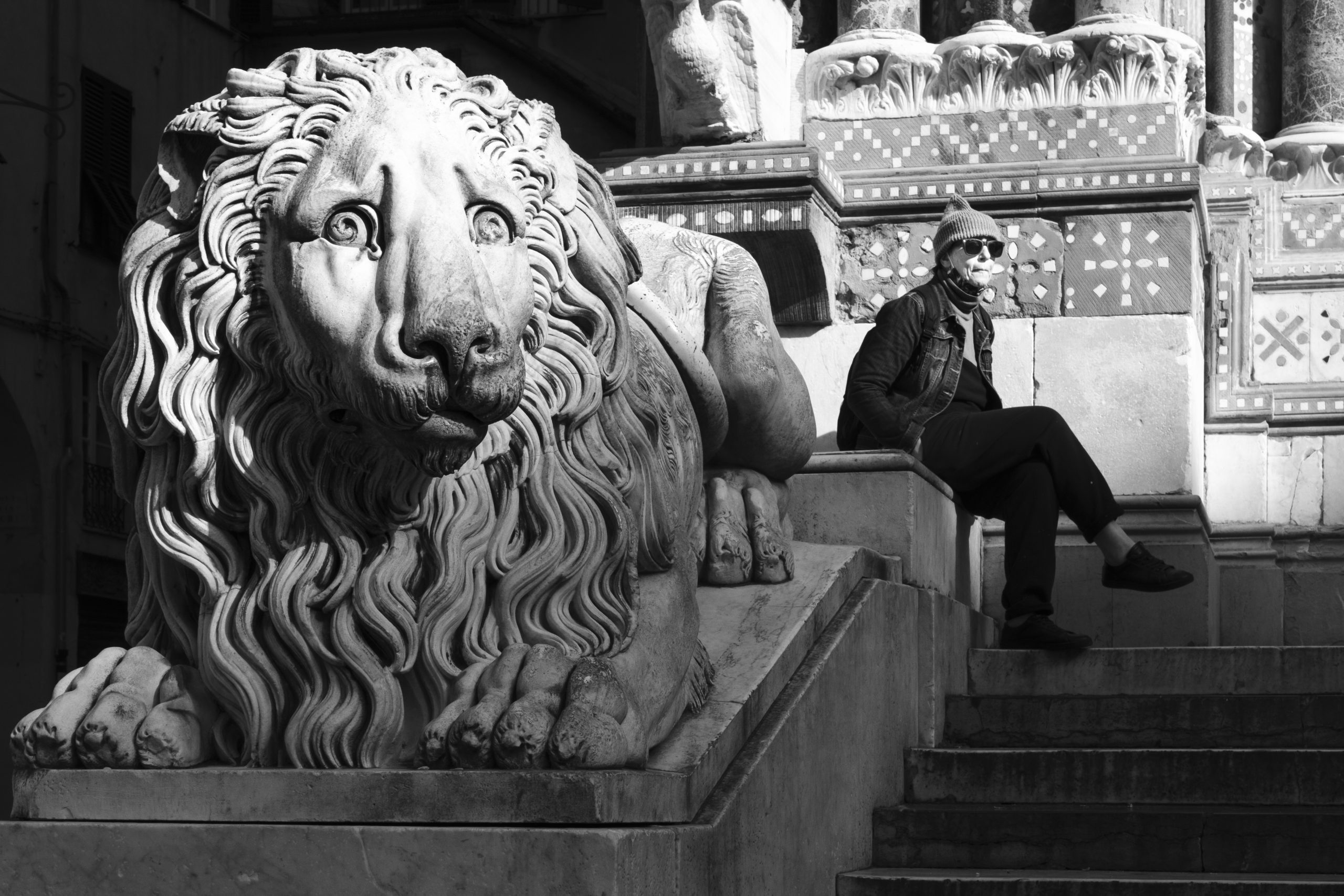
MN: Any others?
LS: I also love a photo taken in Rio de Janeiro, Brazil, by Luiz Bhering. It shows a boy jumping in the water with the Corcovado mountain in the background. It’s not a street literally, but a [metaphorical] road of freedom, an explosion of power. I love this picture because it’s powerful, and Brazil has been one of the countries most affected by the pandemic.
Yuzo Fujii’s photo of a Japanese woman walking in Tokyo is also one of my favourites. This photo has a very strong aesthetic. It’s beautiful.
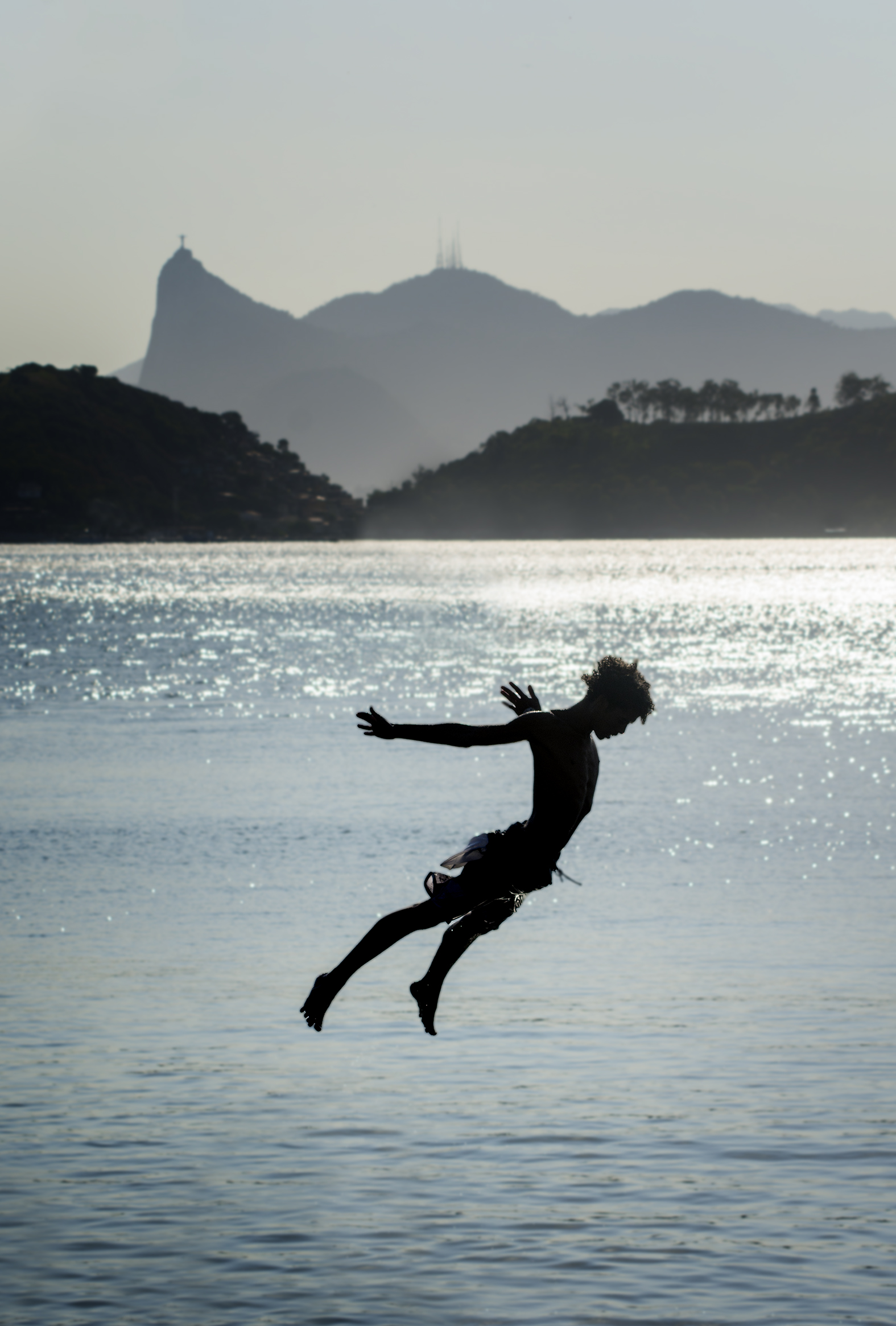
MN: What do you feel the photos demonstrate as a whole?
LS: A new form of participation and a different way to show commitment and support for our communities. It’s part of a significant global trend for how we – non-wealthy people – can give back without giving cash. We can offer our time or share a little bit of ourselves for the common good. This trend transcends geographies and cultural traditions.
MN: You invited six Macao ambassadors to support the project. Tell us about them.
LS: Yes, we invited people from different backgrounds, ranging from artists to nonprofit workers to executives. Our local ambassadors are Amanda Ho, president of Zonta Macau; Maria Garcia, business consultant, Asia Pioneer Entertainment; Mannie Lao, of Noble Mart; Alexandre Marreiros, an artist and architect; Suzanne Watkinson, of Ambiente Properties; and Sophie Lei, a socialite and influencer.
Essentially, the ambassadors share a selected photo on their social media and encourage their friends or clients to purchase the image or make a donation. Ultimately, “This is My Street” is about new forms of philanthropy and how we commit to our communities.
MN: You started the association in 2019. What have you been up to?
LS: Because of the pandemic, we had to change some of the activities we had planned initially. In addition to the “This Is My Street” project, we also promoted a fundraising campaign to help people in Beirut, Lebanon, who had been ousted from their homes by the 4 August 2020 blast that destroyed half of the city. We also helped the non-profit association in Beirut, Achrafieh 2020, which helped rebuild homes following the explosion.
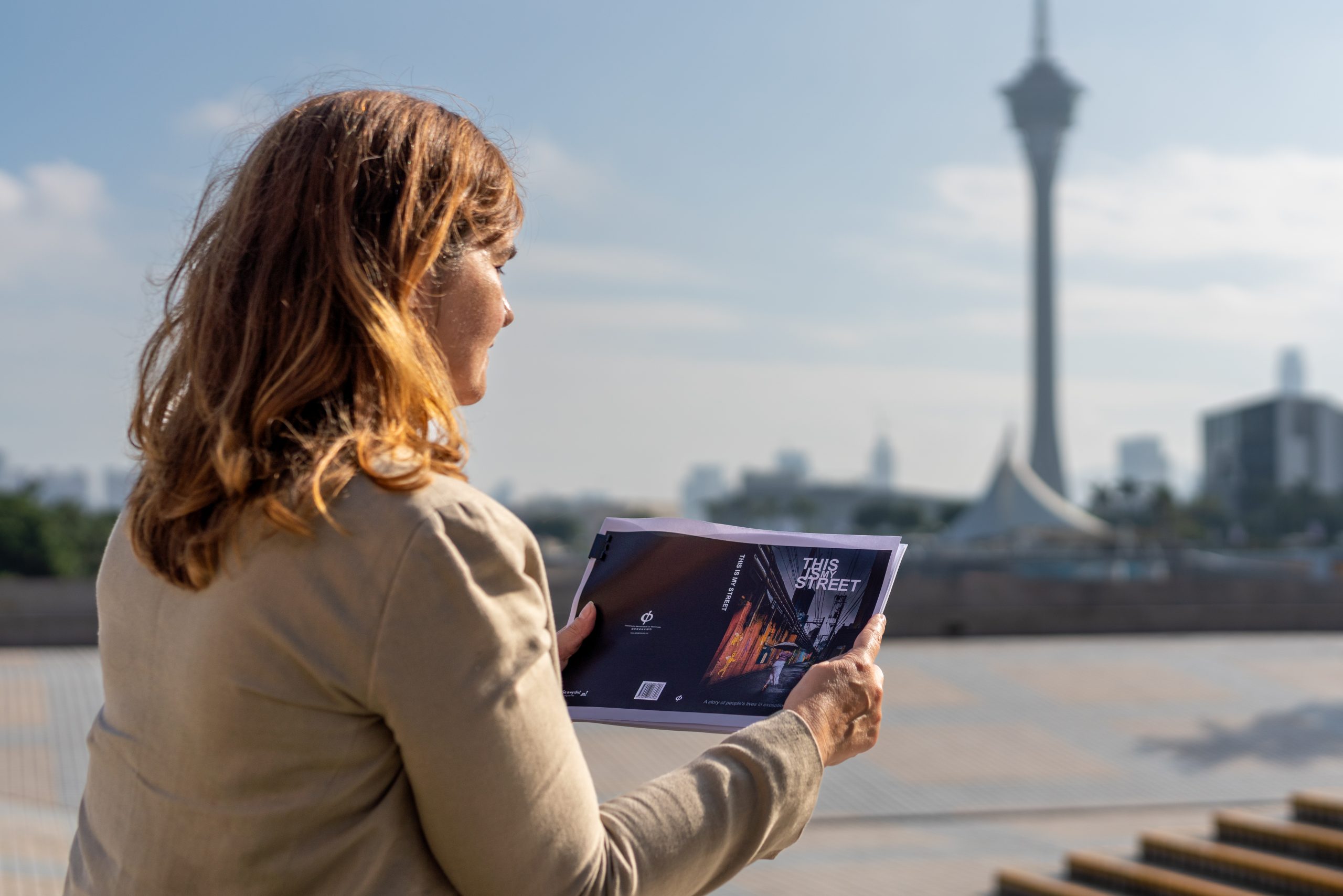
MN: Why did you choose Caritas Macau as the beneficiary for this charity project?
LS: We heard that Caritas Macau was looking to buy a new exercise machine for the children at the shelter, and we wanted to support them. These children have serious physical disabilities, and we hope to offer the institution a machine that could help them. Philanthropy is a Greek word meaning “the love of humankind”, and that’s what our association aims to promote.
MN: Why is it important to make contributions to society?
LS: The pandemic has shown us how interdependent we are as a society and how fundamental it is to support our community when we have an opportunity to do so.
Giving back is really about empowering people. Everybody can make a positive change and create a better future for the next generation.
Macao is a small city and, very often, people do beautiful things for the common good, but it’s difficult to link people together. I think that’s what my association has achieved; our projects show that Macao people have good hearts. I am very proud of that.
MN: Can Macao play a more prominent role in regional and global philanthropy?
LS: Absolutely. This is one of the core objectives of our association – to help Macao join the international philanthropy networks. This city is a very generous place, and we want to share that with the world. ‘This is My Street’ is one example of how we can take a made-in-Macao project global.
By joining global philanthropist networks, we can also work with international partners on new trends and paths for philanthropy to be more effective and accountable. From a transcultural perspective crossing East and West, we can also learn more about the many ways we can give back.
MN: After this project wraps up, what’s next for you and the philanthropy association?
LS: I plan to write more – perhaps a book on philanthropy in Macao. We also hope to focus on international opportunities by participating in the major philanthropic networks in China and abroad.
Visit the exhibition at Artyzen Grand Lapa Macau from 13 to 28 November or email [email protected] to purchase the “The is My Street” charity photo book. All proceeds benefit children with disabilities at Caritas Macau’s Lar de Nossa Senhora da Penha centre.
